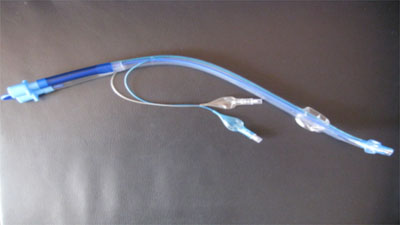

This selection method, however, seems to be more accurate when selecting larger sizes of DLT for an individual patient. Objective selection criteria based on the measured tracheal width from a chest radiograph have been successfully used. Using radiological measurements of the airway may be a useful and objective method of choosing the correct size of double-lumen endobronchial tubes (DLTs). We found that we could predict the sizes of the DLT fairly accurately, especially the smaller DLTs. Implications: We used computer tomographic scans to measure the diameter of the left mainstem bronchus, then selected the size of the left-sided double-lumen endobronchial tube (DLT) accordingly. Our study showed that CT scan measurements of the diameter of the left bronchus were especially useful in choosing smaller DLTs. The overall positive predictive value for the male and female patients was 84.4% and 61.1%, respectively. Twelve patients (24%) received an oversized DLT, but none received an undersized DLT. Six patients were correctly predicted to receive 32F DLTs. Thirty-four patients (68%) were predicted to require smaller DLTs (37F or smaller). The tracheas of all patients were successfully intubated with the predicted DLT sizes. All DLT placements were confirmed and positioned by using fiberoptic bronchoscopy. The sizes of DLT selected were 32F, 35F, 37F, 39F, and 41F for left main bronchus diameters of 12 mm, respectively.

The measurements of the left main bronchus diameter were made by using the electronic calipers of the spiral scanner to the nearest millimeter. Fifty consecutive Asian adults aged 17-80 yr with preoperative chest CT scans undergoing elective thoracic surgery were entered into the study. We investigated the use of chest computer tomographic (CT) scan measurement of the left mainstem bronchial diameter to predict the correct left-sided double-lumen endobronchial tube (DLT) size in Asian patients who may require smaller DLT sizes.


 0 kommentar(er)
0 kommentar(er)
